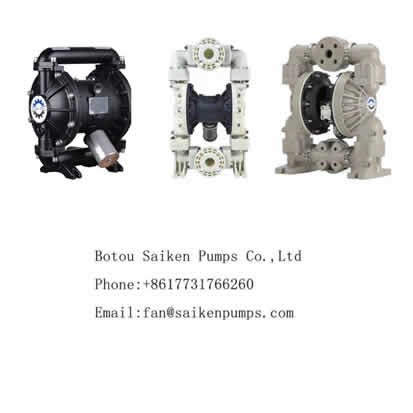
China Pumping Solutions Leader
The composition and classification of diaphragm pump, as well as the selection principles and methods of the type, actuator, mode of action and flow characteristics of the regulating valve are analyzed.
The role of the pneumatic diaphragm pump in the process control is to accept the control signal of the regulator or the computer, change the flow rate of the adjusted medium, so that the adjusted parameters are maintained within the required range, so as to achieve the automation of the production process. If the automatic adjustment system is compared with the manual adjustment process, the detection unit is the human eye, the adjustment control unit is the human brain, then the executive unit – the diaphragm pump is the human hand and foot. In order to realize the adjustment and control of a certain parameter in the process, such as temperature, pressure, flow rate, level, etc., it is inseparable from the diaphragm pump. Therefore, the correct selection of diaphragm pump is of great significance in the automation process.
Diaphragm pump composition and classification
Diaphragm pump, also known as control pump, is the main type of actuator, by accepting the control signal output of the control unit, with the help of power operation to change the fluid flow. Diaphragm pumps are generally composed of actuators and valves. If according to the power used by its equipped actuator, the diaphragm pump can be divided into pneumatic, electric and hydraulic three kinds, that is, the pneumatic diaphragm pump with compressed air as the power source, the electric diaphragm pump with electricity as the power source, and the hydraulic diaphragm pump with the pressure of the liquid medium (such as oil, etc.).
Diaphragm pump type selection
2.1 Selection of valve body type of diaphragm pump The selection of valve body is the most important link in the selection of diaphragm pump. There are many types of diaphragm pump valve bodies.
(1) The spool shape structure is mainly considered according to the selected flow characteristics and unbalance force.
(2) Wear resistance When the fluid medium is a suspension containing a high concentration of wear particles.
(3) Corrosion resistance Because the medium is corrosive, in the case of meeting the adjustment function, try to choose a simple valve structure.
(4) The temperature and pressure of the medium When the temperature and pressure of the medium are high and the change is large, the valve with small temperature and pressure changes of the spool and valve seat should be selected.
